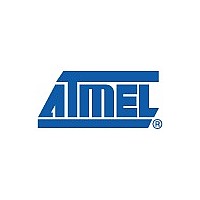ATmega168A Atmel Corporation, ATmega168A Datasheet - Page 123

ATmega168A
Manufacturer Part Number
ATmega168A
Description
Manufacturer
Atmel Corporation
Specifications of ATmega168A
Flash (kbytes)
16 Kbytes
Pin Count
32
Max. Operating Frequency
20 MHz
Cpu
8-bit AVR
# Of Touch Channels
16
Hardware Qtouch Acquisition
No
Max I/o Pins
23
Ext Interrupts
24
Usb Speed
No
Usb Interface
No
Spi
2
Twi (i2c)
1
Uart
1
Graphic Lcd
No
Video Decoder
No
Camera Interface
No
Adc Channels
8
Adc Resolution (bits)
10
Adc Speed (ksps)
15
Analog Comparators
1
Resistive Touch Screen
No
Temp. Sensor
Yes
Crypto Engine
No
Sram (kbytes)
1
Eeprom (bytes)
512
Self Program Memory
YES
Dram Memory
No
Nand Interface
No
Picopower
No
Temp. Range (deg C)
-40 to 85
I/o Supply Class
1.8 to 5.5
Operating Voltage (vcc)
1.8 to 5.5
Fpu
No
Mpu / Mmu
no / no
Timers
3
Output Compare Channels
6
Input Capture Channels
1
Pwm Channels
6
32khz Rtc
Yes
Calibrated Rc Oscillator
Yes
Available stocks
Company
Part Number
Manufacturer
Quantity
Price
Company:
Part Number:
ATmega168A-AU
Manufacturer:
ATMEL
Quantity:
464
Part Number:
ATmega168A-AU
Manufacturer:
ATMEL/爱特梅尔
Quantity:
20 000
Part Number:
ATmega168A-MU
Manufacturer:
ATMEL/爱特梅尔
Quantity:
20 000
Company:
Part Number:
ATmega168A-PU
Manufacturer:
ATMEL
Quantity:
1 000
- Current page: 123 of 567
- Download datasheet (21Mb)
16.6.1
16.6.2
16.6.3
8271D–AVR–05/11
Input Capture Trigger Source
Noise Canceler
Using the Input Capture Unit
tion mode (WGM13:0) bits must be set before the TOP value can be written to the ICR1
Register. When writing the ICR1 Register the high byte must be written to the ICR1H I/O location
before the low byte is written to ICR1L.
For more information on how to access the 16-bit registers refer to
on page
The main trigger source for the Input Capture unit is the Input Capture pin (ICP1).
Timer/Counter1 can alternatively use the Analog Comparator output as trigger source for the
Input Capture unit. The Analog Comparator is selected as trigger source by setting the Analog
Comparator Input Capture (ACIC) bit in the Analog Comparator Control and Status Register
(ACSR). Be aware that changing trigger source can trigger a capture. The Input Capture Flag
must therefore be cleared after the change.
Both the Input Capture pin (ICP1) and the Analog Comparator output (ACO) inputs are sampled
using the same technique as for the T1 pin
identical. However, when the noise canceler is enabled, additional logic is inserted before the
edge detector, which increases the delay by four system clock cycles. Note that the input of the
noise canceler and edge detector is always enabled unless the Timer/Counter is set in a Wave-
form Generation mode that uses ICR1 to define TOP.
An Input Capture can be triggered by software by controlling the port of the ICP1 pin.
The noise canceler improves noise immunity by using a simple digital filtering scheme. The
noise canceler input is monitored over four samples, and all four must be equal for changing the
output that in turn is used by the edge detector.
The noise canceler is enabled by setting the Input Capture Noise Canceler (ICNC1) bit in
Timer/Counter Control Register B (TCCR1B). When enabled the noise canceler introduces addi-
tional four system clock cycles of delay from a change applied to the input, to the update of the
ICR1 Register. The noise canceler uses the system clock and is therefore not affected by the
prescaler.
The main challenge when using the Input Capture unit is to assign enough processor capacity
for handling the incoming events. The time between two events is critical. If the processor has
not read the captured value in the ICR1 Register before the next event occurs, the ICR1 will be
overwritten with a new value. In this case the result of the capture will be incorrect.
When using the Input Capture interrupt, the ICR1 Register should be read as early in the inter-
rupt handler routine as possible. Even though the Input Capture interrupt has relatively high
priority, the maximum interrupt response time is dependent on the maximum number of clock
cycles it takes to handle any of the other interrupt requests.
Using the Input Capture unit in any mode of operation when the TOP value (resolution) is
actively changed during operation, is not recommended.
Measurement of an external signal’s duty cycle requires that the trigger edge is changed after
each capture. Changing the edge sensing must be done as early as possible after the ICR1
Register has been read. After a change of the edge, the Input Capture Flag (ICF1) must be
117.
ATmega48A/PA/88A/PA/168A/PA/328/P
(Figure 17-1 on page
143). The edge detector is also
”Accessing 16-bit Registers”
123
Related parts for ATmega168A
Image
Part Number
Description
Manufacturer
Datasheet
Request
R

Part Number:
Description:
INTERVAL AND WIPE/WASH WIPER CONTROL IC WITH DELAY
Manufacturer:
ATMEL Corporation
Datasheet:

Part Number:
Description:
Low-Voltage Voice-Switched IC for Hands-Free Operation
Manufacturer:
ATMEL Corporation
Datasheet:

Part Number:
Description:
MONOLITHIC INTEGRATED FEATUREPHONE CIRCUIT
Manufacturer:
ATMEL Corporation
Datasheet:

Part Number:
Description:
AM-FM Receiver IC U4255BM-M
Manufacturer:
ATMEL Corporation
Datasheet:

Part Number:
Description:
Monolithic Integrated Feature Phone Circuit
Manufacturer:
ATMEL Corporation
Datasheet:

Part Number:
Description:
Multistandard Video-IF and Quasi Parallel Sound Processing
Manufacturer:
ATMEL Corporation
Datasheet:

Part Number:
Description:
High-performance EE PLD
Manufacturer:
ATMEL Corporation
Datasheet:

Part Number:
Description:
8-bit Flash Microcontroller
Manufacturer:
ATMEL Corporation
Datasheet:

Part Number:
Description:
2-Wire Serial EEPROM
Manufacturer:
ATMEL Corporation
Datasheet:

Part Number:
Description:
U6046BREAR WINDOW HEATING TIMER / LONG-TERM TIMER
Manufacturer:
ATMEL Corporation
Datasheet:











